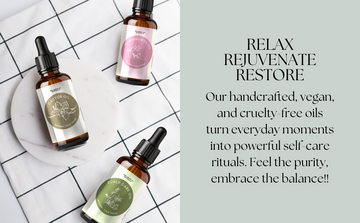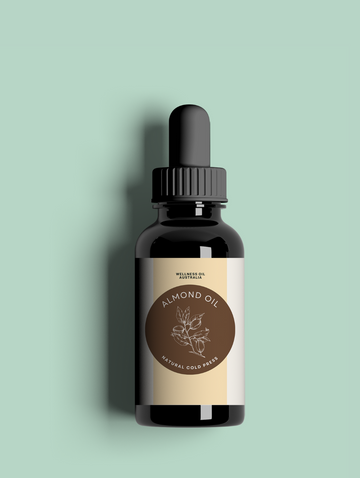If you’ve ever wondered how to use oils without upsetting sensitive skin — you’re not alone. With TikTok’s “skin barrier queen” trend and the rise of minimalist skincare, more people are discovering that a simple, well-timed facial oil routine can transform how their skin feels.
Let’s break down a gentle, glow-boosting facial oil routine designed especially for natural oils for sensitive skin, one that nurtures rather than overwhelms.
Morning: Protect, Prime & Glow
Step 1 — Start with hydration
Sensitive skin loves consistency. Begin with a gentle cleanser (no foaming, no fragrance). Then mist with a pH-balanced toner or just pat on a few drops of rosewater — it preps your skin to absorb oils evenly.
Step 2 — Apply your morning facial oil
Choose light, non-comedogenic, cold-pressed oils such as:
-
Jojoba oil – mimics skin’s natural sebum and absorbs quickly.
-
Rosehip oil – rich in antioxidants and vitamins A & C; brightens without irritation.
-
Squalane (plant-based) – featherlight and barrier-friendly.
Use 2–3 drops. Warm between your palms and press into damp skin. Don’t rub — pressing helps avoid micro-irritation and locks in moisture.
Pro tip: Mixing a drop of oil with your moisturizer helps it spread evenly and cuts any heaviness.
Step 3 — Finish with SPF
Oils do not replace sunscreen. After applying your morning facial oil, always layer SPF. Together, they form a light, glowy shield against environmental stress.
Night: Repair, Calm & Rebalance
Evening is when your skin resets. Oils support that process naturally.
Step 1 — Gentle cleanse (no stripping)
Use lukewarm water, not hot. Massage off makeup or sunscreen with a few drops of jojoba oil (it dissolves residue beautifully). Follow with a mild cleanser if needed.
Step 2 — The nighttime oil ritual
Now your skin is ready to absorb. Go for slightly richer, restorative natural oils for sensitive skin such as:
-
Sweet almond oil – deeply nourishing but soft on sensitivity.
-
Marula oil – rich in fatty acids, ideal for overnight use.
-
Chamomile or calendula-infused oil – soothing and anti-redness.
Massage 3–4 drops in slow, upward motions. Focus on areas that feel tight or reactive.
Manifestation Moment:
As you apply your night oil, take three slow breaths. Visualize your skin renewing itself overnight — calm, clear, radiant. Consistency + mindfulness = better results and better energy.
Step 3 — Sleep on silk or bamboo
Sensitive skin is easily irritated. A smooth pillowcase reduces friction and helps your oils stay where they belong — on your face, not your sheets.
Why Facial Oils Help Sensitive Skin
|
Benefit |
Why It Matters |
|
Barrier support |
Natural oils mimic sebum and seal hydration, strengthening sensitivity-prone skin. |
|
Fewer irritants |
Cold-pressed oils contain no harsh emulsifiers or fragrances. |
|
Minimal ingredients |
You control what’s on your skin — just the essentials. |
|
Soothing feel |
Oils like chamomile and almond calm reactive sensations. |
My Personal POV: When I Simplified, My Skin Thanked Me
I used to layer 6–7 products because social media said “the more, the better.” Then I pared it back to just cleanser, toner, and facial oils — one for morning, one for night. Within two weeks, my skin looked calmer and more even-toned.
Sometimes, sensitive skin doesn’t need more — it needs less that’s better.
Manifesting Better Skin Energy
TikTok’s “manifestation skincare” trend isn’t about magic — it’s about mindset. When you apply products with presence, you signal self-care, calm, and gratitude. Your routine becomes ritual.
Here’s a quick mantra I love:
“My skin is calm, my mind is clear, my energy glows.”
Repeat it as you massage your oil. The energy shift is real — your skincare starts working with you, not just on you.
Quick FAQs
Q1: Can facial oils replace moisturizer for sensitive skin?
Yes, if your skin feels balanced. Otherwise, layer oil after moisturizer to seal hydration.
Q2: How often should I use facial oil?
Twice daily — morning (light) and night (richer) works well for most.
Q3: What if my skin breaks out?
Check you’re using non-comedogenic oils and small amounts. Sometimes less is more.
Q4: Can I mix essential oils?
If skin is very sensitive, stick to pure carrier oils first. Once stable, add a drop of calming essential oils like lavender (diluted properly).



